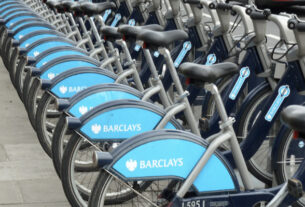One of the biggest frustrations with cycling in Reading is the lack of progress with many cycle schemes – there doesn’t seem any logic that relatively small but useful improvements seem to be outstanding whilst other much more costly major schemes are progressed. The answer to this is the hit-and-miss way that cycle schemes in England are funded.
In the past, most cycle schemes were funded directly from local Council finances. Typically, there would be an annual budget for schemes, which even if a small budget, would mean certainty about future funding.
However, local Council funding is now under extreme pressure, especially with increasing costs of adult and children’s social care, which now takes around two-thirds of total Council expenditure. Funding for Highways and Transport typically represents 4% of total Council expenditure, down from around 7% around ten years ago.
This reduction in funding has had a significant impact on local transport schemes, such as new pedestrian crossings, traffic calming, 20mph speed limits, road safety schemes, as well as cycle schemes. The situation in Reading is that presently there is no regular on-going funding for cycle schemes.
Recent cycle schemes in Reading, Sidmouth Street and Shinfield Road, have been funded by direct grants from central government. The problem with this is these grants are ring-fenced to particular types of scheme, and there is no opportunity to use this funding elsewhere. Many people have suggested that these are probably not schemes that were the top priority for the town.
Central government funds these schemes through a recently estab-lished body known as Active Travel England. Even though it was only established a couple of years ago, the Government has just cut funding by two-thirds for what looks like purely political reasons, because such schemes were perceived as the ‘War against the Motorist’.
The situation now is that Active Travel funding in England is around £1 per person per year, whereas road spending is around £148 per person per year.
However, not everything is complete doom and gloom! There are ways that cycle schemes can be funded.
One way is to ensure improvements for cyclists are included as part of other traffic schemes which are being implemented, such as new cycle lanes painted when roads are resurfaced, or cycle advanced stop-lines included when traffic signals are introduced or upgraded.
There are also opportunities for cycling as part of new development schemes. New schemes should make provision to encourage walking and cycling, not just for residents or users
of a new facility, but for others walking or cycling through the area. This could include new sections of route as part of the development site, which would further the development of a coherent cycle network, or cycling measures funding elsewhere, as part of contributions through Section 106 and Community Infrastructure Levy.
Other less obvious grants are also available, such as health initiatives funding routes around parks to encourage more walking and cycling.
Finally, and perhaps controversially, government has been considering allowing Councils to enforce minor traffic offences which are presently enforced by the Police, such as yellow boxes and banned turns, similar to Council parking enforcement.
One suggestion is in order to make this more acceptable to the wider public, any fine income is ring fenced to pay for local transport improvements.
It should be emphasised that continued and consistent funding for cycling is important. Countries in Europe such as Denmark and the Netherlands, with high levels of everyday cycling and good cycle infrastructure, have only achieved this through consistent support and funding at both local and central government level since the 1960s.
Tony Carr
RBC Campaigner for RCC



